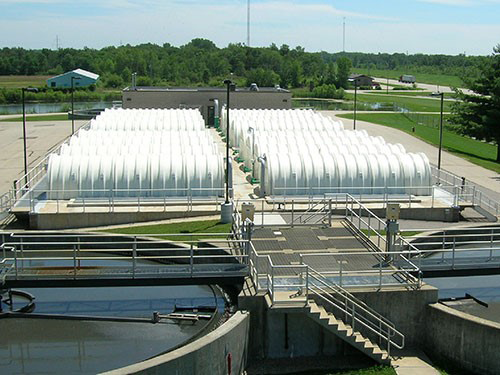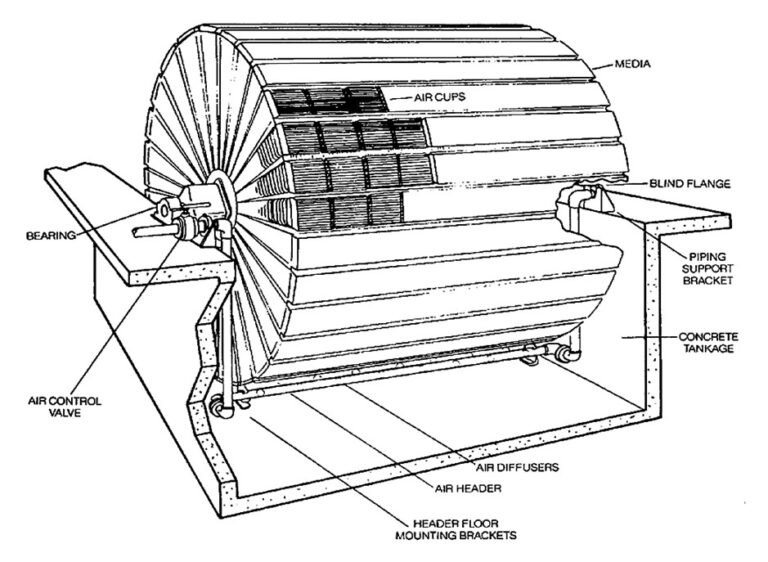Effluents from RBC do not contain high levels of nutrients and are therefore not particularly interesting for agriculture, although they constitute a source of water. However, due to reduce removal of microorganisms, RBC effluents require a further treatment, such as sand filtration, constructed wetlands or another form of disinfection (e.g. chemical disinfection or UV disinfection).
Effective parameters in wastewater treatment:
• Media surface area
• Quality of the inlet wastewater
• Wastewater volume
Organic loading is the primary design parameter for the RBC process. Wastewater temperatures above 55°F have a minimal effect on organic removal and nitrification rates so the various correction factors that must be utilized to determine the needed additional media surface area.
In determining design-loading rates on RBCs, the following parameters should be utilized:
• Design flow rates and primary wastewater constituents
• Total influent BOD5 concentration
• Soluble influent BOD5 concentration and percentage of total and soluble BOD5 to be removed
• Wastewater temperature
• Primary effluent dissolved oxygen
• Media arrangement, number of stages, and surface area of media in each stage
• Rotational velocity of the media
• Retention time within the RBC tank(s)
• Influent soluble BOD5 to the RBC system, including soluble BOD5 from in-plant side-streams, septage dumps, etc.
• Influent hydrogen sulfide concentrations
• Peak loading, BOD5 max/BOD5 avg
Advantages:
• Stable performance
• Lower costs due to modular construction and reduced excavation
• Longer retention time requires less space
• Minimal system overflow
• Low energy consumption
• the only maintenance required is simple lubrication
• Reduce costs compared to suspended growth systems
• Simple operation, no recycling flow, less laboratory testing for process control
• Low sludge production
Disadvantages:
• It has less efficiency than conventional activated sludge process
• Must be protected against sunlight, wind and rain (especially against freezing in cold climates)
• Requires permanent skilled technical labor for operation and maintenance
• Removes a small amount of the pathogen.
Applications
• Municipal wastewater treatment
• Food and Beverage Wastewater Treatment
• Garbage leachate
• Refinery and petrochemical wastewater treatment plant
• Pulp and paper wastewater treatment
• Lagoon washing water




